Special report: Asia’s answer to Bordeaux is blossoming
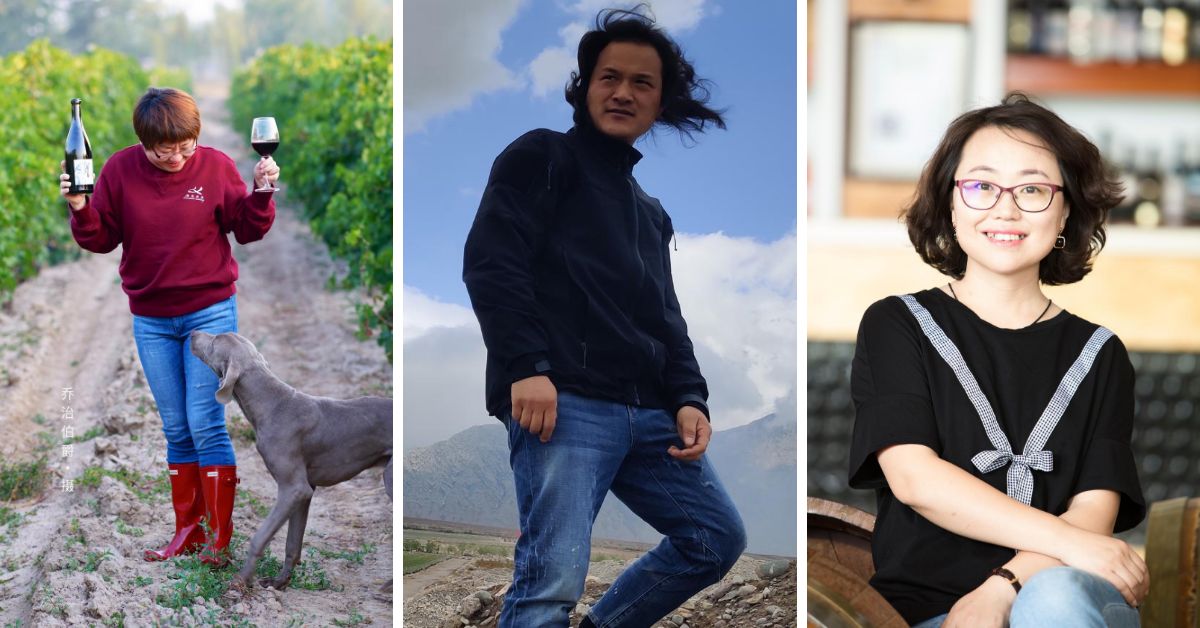
Three talented winemakers from Ningxia are giving the region a bright outlook (L-R: Wang Fang of Kanaan Winery, Liu Jianjun with his tiny Lingering Clouds project, and Zhang Jing of Helan Qingxue).
You may know Ningxia (pronounced “Ningshia”), located in north China, because of its desolately beautiful desert topography, or for its ancient tomb sites, or its mountain scenery. More likely though these days you will know Ningxia for its wine. The dry, continental-climate autonomous region holds nearly 200 producers under the appellation of the Eastern Foothills of Helan Mountain. Some 80 producers own their own winery, and many are newcomers, eager to tap into a growing sophistication in the industry that is seeing Ningxia wines win acclaim the world over.
Ningxia is often described as China’s answer to Bordeaux. For red wine at least, it is known for Bordeaux varieties despite its different climate. And inspired by Bordeaux’s classifications, the Ningxia Wine Federation has adopted a five-growth classification system since 2013 to assess and rank producers every two years. The recently updated ranking in 2019 saw three wineries promoted to second-growth status (first growth is still up for grabs at the moment but will likely be occupied soon) with six producers rated as third growths, 17 ranked as fourth growths and 11 as fifth growths.
I recently interviewed winemakers and owners from Ningxia to learn how this promising wine region in China has kept improving year on year. Following is a lengthy report based on our tastings at JamesSuckling.com and interviews with three promising Ningxia producers we found last year: Helan Qingxue, Kanaan Winery, and the independent project Lingering Clouds.
Read more: Small China tasting reveals big progress from top producers
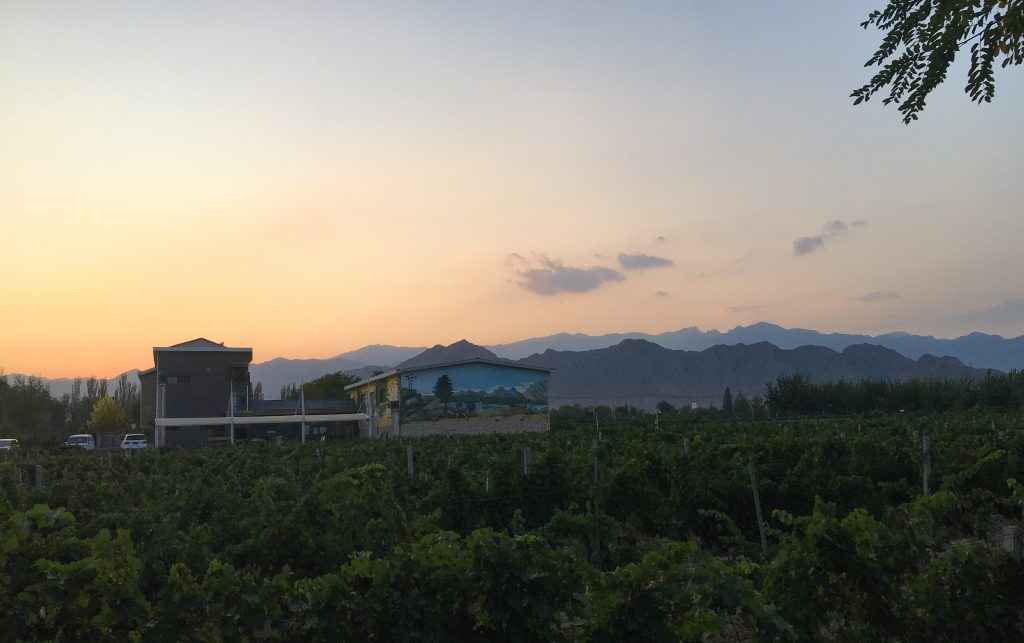
Kanaan Winery sits against the sunset in the Helan Mountain region.
Wines with color and richness abound, but what about finesse?
With intense sunshine, wide diurnal temperature differences, and extreme climates (summer temperature can reach 40 degrees Celsius and winters are extremely cold), Ningxia seems to be a rough proposition for winemaking. Irrigation and vine-burying in winter are part of the deal if you want to plant vines in this Gobi Desert region.
Last year, we put together a tasting of nearly 150 Chinese wines, and I had the privilege of tasting some wines that were just released or about to be released this year. With more than half of the wines coming from Ningxia, the result was a pleasant surprise compared to 10 years ago, when James was still the senior editor at Wine Spectator. He noted that the only memorable Chinese wine then was from Shanxi, the Grace Vineyard Chairman Reserve 2006, which was rated 86 points. Now, it’s totally a different story. More than half (55 percent) of the wines from China got 90 points or above, and Ningxia is at the center of this dramatic progress.
My tasting gave results consistent with my other experiences of wines from Ningxia. Today the region produces many solid, rich, and generous wines marked by a plethora of color, fruit, and to some extent, alcohol too. There seems to be less pyrazine-driven greenness, something very common 10 years ago with cabernet wines, especially cabernet gernischt (which is genetically identical to carmenere). Many excellent red wines are full-bodied with concentration and sleek tannins. A few possess the composed finesse I have long been looking for in wines from Ningxia. Still, many wines seem too “hedonistic”, and almost have a candied sweetness on the palate with lots of generous fruit, while some are even jammy and overripe. Lots of wines lack natural acidity, and only a few producers take the risk to harvest early. Naturally, acidification is not rare.
“High alcohol is almost cut and dried in the wines from Ningxia now,” says Wang Fang, the German-Chinese owner of Kanaan Winery, whose father, the unsung hero who established the vineyards some 10 years ago. Now she makes one of our top wines from Ningxia, a Bordeaux blend, as well as an excellent riesling. “Sometimes, the wine might have a potential alcohol volume of 16.5 percent. It is even difficult to ferment it to complete dryness,” she added. One year, Wang simply gave up and instead made a fortified wine.
Read more: 4 top China wine producers pushing quality and reputation
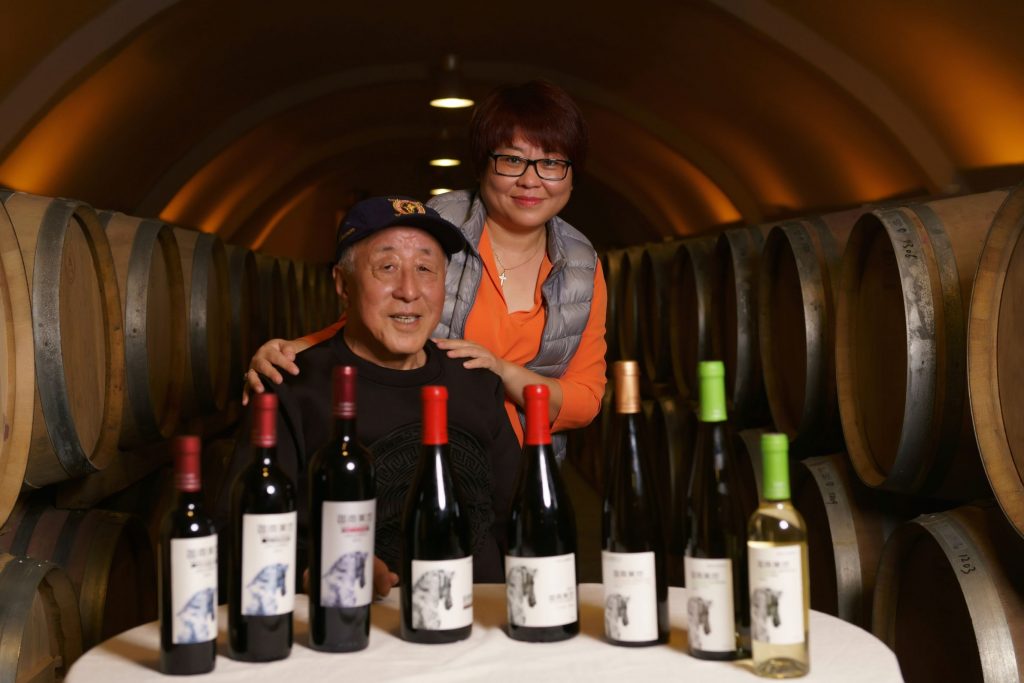
Wang Fang and her father, who has been her winemaking mentor.
“Today, many good producers have realized that they are picking too late so the grapes can become overripe while acidity goes down,” says Liu Jianjun, a young, soft-spoken independent winemaker who makes aspiring wines with his garage-wine project “Lingering Clouds”. He sources grapes from the other wineries and farmers and his recent release, the Lingering Clouds Red Beard Cabernet Sauvignon 2017, (only a few barrels made, 93 points) is a success.
Nevertheless, many consumers in China are fond of wines with some sweetness carried by very smooth and soft tannins. For tiny producers like Liu, market demand is critical to survival.
“Most Chinese consumers are just starting to get used to drinking wine, so some have to rely on their baijiu experience,” said Liu. “And when they describe a wine, descriptors for baijiu like ‘perfumed’, ‘smooth’, ‘soft’ or ‘aggressive’ are frequently used. So, some sweet fruit with a moderate level of very ripe tannin and lower acidity might do the trick.”
(Baijiu is a popular sorghum-based Chinese spirit.)
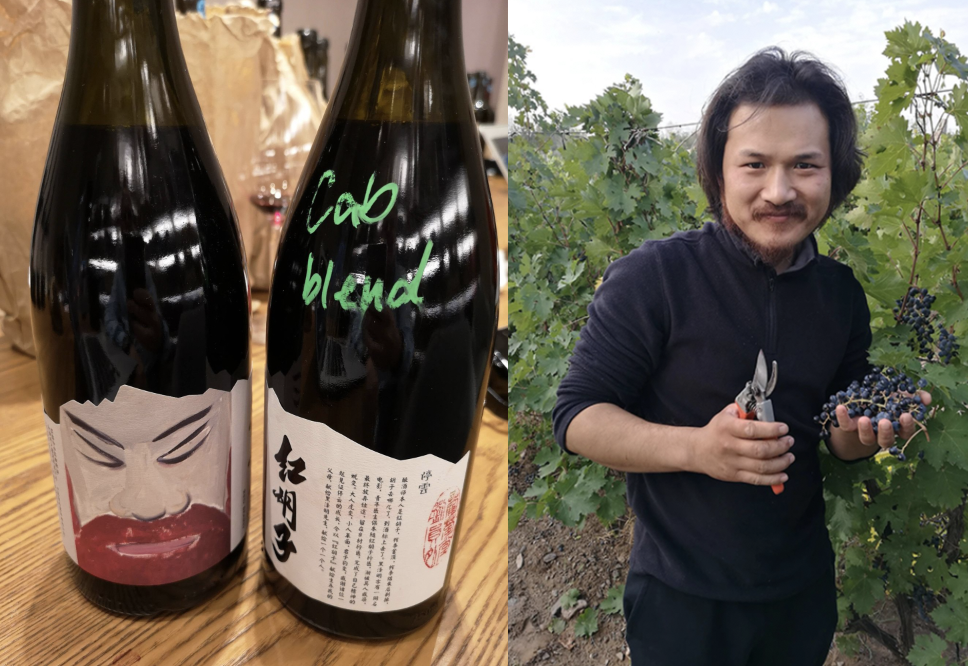
Liu Jianjun made an excellent 2017 cabernet blend under his small-scale Lingering Clouds project. The name “Red Beard” alluded to his own beard.
More than just cabernet
Cabernet sauvignon is the unabashed mainstay in Ningxia, responsible for around 70 percent of the red varieties, with merlot coming a distant second (just more than 15 percent). The once-popular signature Chinese red variety, cabernet gernischt, is on a gradual decline, as this late-ripening variety has to work harder to yield great wines in the sandy soils in Ningxia. Many times I found it underripe, smoky, green, and medicinal. Some I doubt might even have problems with viruses.
Over the past few years marselan, the cabernet sauvignon and grenache cross, has gained immense success and popularity among producers throughout China’s major wine regions, not only in Ningxia but also notably in Xinjiang, Shandong and Hebei provinces. One of our highest-rated Chinese wines last year was a marselan from Huailai, Heibei province, made by Domaine Franco Chinois. In Ningxia, we were impressed by the marselan made by Ho-Lan Soul, whose 2016 vintage received 91 points, though there are many more for us to enjoy from this region. The variety’s gustatory merits of round tannin, the wealth of fruit, and its ability to maintain freshness under heat are magnified in Ningxia. But the region never stopped exploring.
“Last year, we harvested our first vintage of malbec,” said Zhang Jing, winemaker of Helan Qingxue, an established producer in Ningxia that was recently promoted to the much-coveted Second Growth status by Ningxia Wine Federation in 2019. “At the moment, the result in the barrel is excellent. We will see if the final wine is good enough to be bottled on its own.”
Read more: Ao Yun 2016: Another Peak for China?
- The barrel cellar of Helan Qingxue features a mix of new and used French barrels.
- Jia Bei Lan by Helan Qingxue Vineyard was one of the first Chinese wines to win a recognized international award in 2011, and its success encouraged many others to send samples to international wine competitions.
“Syrah might be a good bet as well,” says Wang Fang of Kanaan Winery. A few producers have made astounding progress with it. Zhang Jing of Helan Qingxue also told me through a Wechat interview that she would very much like to try tempranillo in Ningxia, as the variety ripens almost at the same time as merlot and is quite hardy regarding the drought. “Ever since I tasted Pingus, I was haunted by the idea of making tempranillo here. The grape is so pliable for wines of very high caliber,” added Zhang.
There are also pinot noirs in Ningxia, even though it is a wild card to play in this extreme climate of dry and hot summers with a short growing season. However, Chateau Chanson and Helan Qingxue have made their interpretations of the grape, and the recent vintages I tasted were much better than I had expected.
“There are some cooler areas such as HongSiBao where we can plant pinot noir. But I think it’s more because many winemakers have a pinot noir dream, to make wines that are reminiscent of a fine Burgundy,” commented Zhang Jing.
And of course, many winemakers have increased their understanding of wine in Burgundy.
Domaine des Aromes, for example, is a small project established by a young and down-to-earth couple (Peng Shuai and Sun Miao) who studied in Burgundy and now make wines with a few hectares of vines planted to Bordeaux varieties. Their style is probably better described as “Bordeaux varieties in Ningxia with a Burgundian and natural wine sensibility.” The quality has been rising over the last few years. Now they are making wines with interest and drinkability, and have certainly added more color to the flourishing Ningxia wine scene.
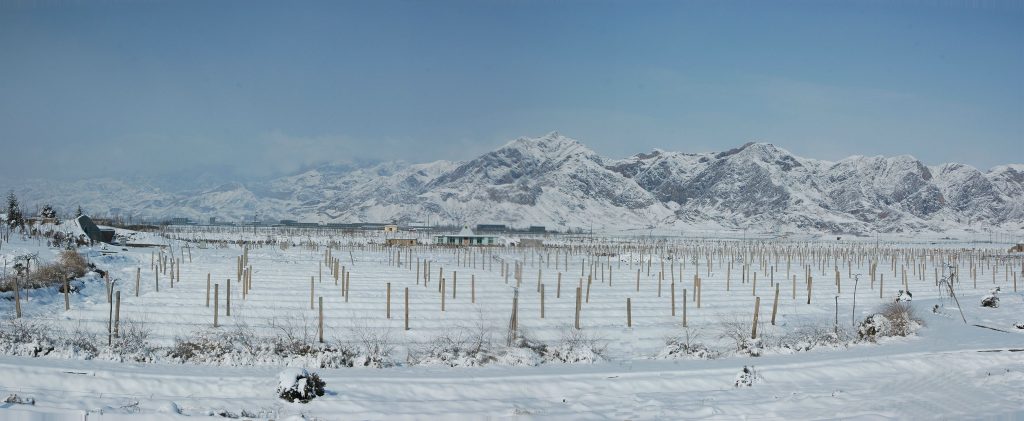
Vines are buried in the soil at a Helan Qingxue vineyard to protect against the very cold Ningxia winter.
Ningxia’s white wines
When it comes to white wines, chardonnay is the alpha grape in Ningxia, but I found many quite full and phenolic, some even malty. Most need freshness and that kind of assertive, “cut-to-the-chase” acidity to give the wine more backbone and zest. Some mineral austerity would certainly be desirable and add extra dimensions. Wang Fang of Kanaan Winery has been making some consistent rieslings here since 2013, another commendable success in such a demanding climate.
“The riesling here is much more tropical. At first, I was not sure how it would be translated in Ningxia,” says Wang Fang. “It’s like a mission impossible in such an extreme Gobi-desert climate, yet the good thing is that our vineyard we have a slightly cooler microclimate with more clay in the soil. This means we have a higher level of underground water and a slightly longer growing season too. The result was beyond my expectation.” Apparently, Summergate, one of the most influential wine importers/retailers in China, also saw that and decided to buy their rieslings in 2015. According to Wang Fang, it created a small buzz.
From what I have tasted, on top of riesling, some emerging viognier (blends) could challenge the status of chardonnay in the future, as the variety does not need high acidity to be of interest. Chateau Mihope makes an engaging wine combining viognier with chardonnay. Changyu Moser XV has been making an intriguingly innovative blanc de noir out of cabernet sauvignon with good texture and seriousness, and it would be even better if there were more vibe and energy. Now, with new cultivars being tried out and more innovations made on winemaking, it is likely that Ningxia is moving away from Bordeaux and Burgundy while it continues to seek out its own identity.
China’s new pride under the government’s support
Like almost any other industry in China, the wine sector is also dependent on government policy and support. Ningxia’s wine production has an edge on this over any other wine region in China. This is one of the reasons that the established producer Grace Vineyard decided to plant another 67 hectares of vines in Ningxia in 2011 on top of its 80-hectare vineyard in Shanxi.
To attract international talent and promote the region of East Foothills of Helan Mountain in Ningxia, in 2012 and 2015, the local government twice organized a competition for winemakers, for which they were all sponsored to fly to Ningxia over a period of three years. Each was assigned to a local winery and given grapes of very similar quality from the same vineyard, where vines of 20 years old root. The final wine was assessed by a third-party to select the Gold and Silver medals.
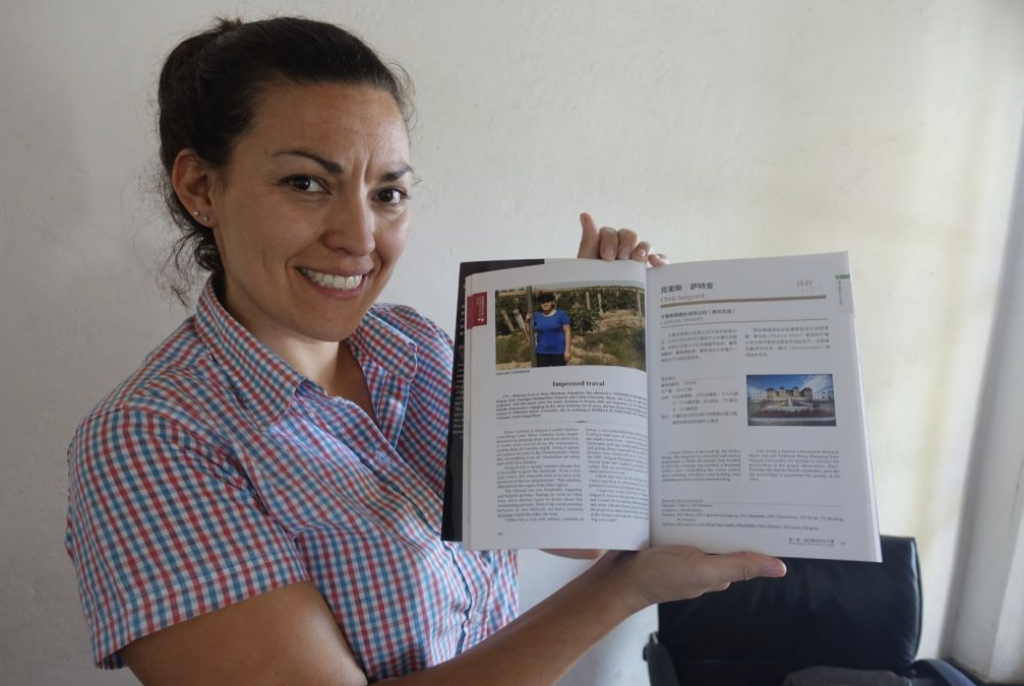
Mariana Paez, a winemaker of Finca Quara in Salta, Argentina, was among the winemakers to attend the International Winemakers Competition in Ningxia organized by the local government. She made a silver-medal wine.
The local government also supported the establishment of Ningxia Wine Federation, a regulatory board consisting of Ningxia producers in 2013, which gave birth to the aforementioned Ningxia winery classification.
“The classification aims to build the threshold for people who are seriously considering starting a winery here,” says Zhang Jing, adding that it has left some room for producers to work on improvement. The classification first came out in 2013 with only the fifth growth on the list, but today it contains producers up to the second growth, as wineries are subjected to a third-party evaluation every two years including assessment of various vintages of wines, vineyards and wineries.
But in a Zoom webinar focusing on premium Chinese wine co-hosted by Ethica Wines, StudioKom and Vino-Joy.com, during which several prominent Chinese winemakers were invited to walk us through about their terroirs and wineries, the Bordeaux-trained winemaker Emma Gao of Silver Heights had a different take.
“The classification also asks you to have a beautiful winery or spacious tasting room, which as a small family business we don’t have,” Emma confirmed. Silver Heights, one of Ningxia’s early high-fliers whose vineyards have been recently converted to biodynamic farming, is not yet included in this classification. Their construction of a new winery is underway now.
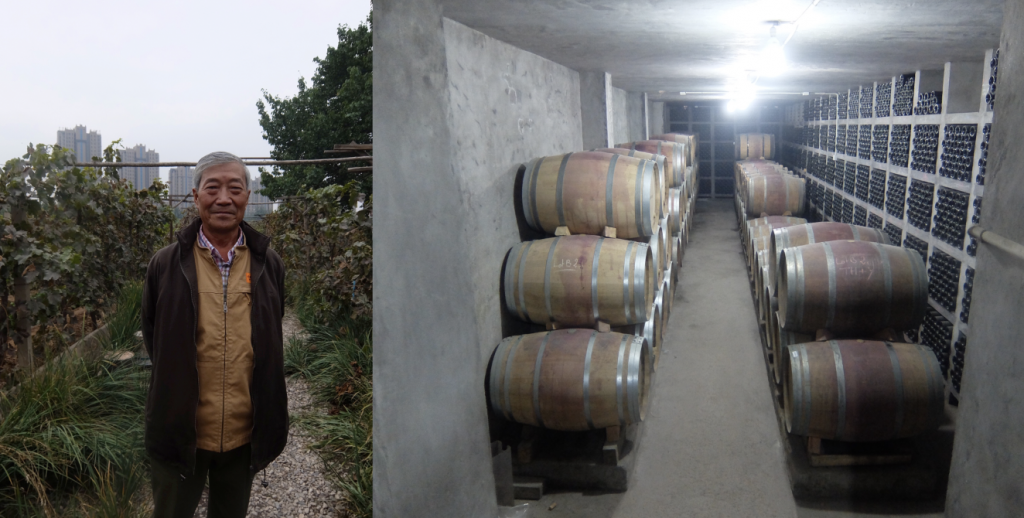
In 2014, Emma Gao’s father still aged the wines in this small basement cellar at Silver Heights winery.
As a region located in the developing part of northwestern China with a significant population of Hui ethnicity (Ningxia’s full name is the Ningxia Hui Autonomous Region, and a third of the population are the Islamic Hui people), the wine industry here might take a new look by addressing other issues.
The Communist Party and State leader Xi paid a visit to the vineyards of Ningxia in early June. It was considered a symbolic and positive move among producers. As his political vision also includes alleviation of poverty and curbs on heavy pollution to improve the natural environment near the Yellow River, from which many vines receive irrigation water, the wine appellation Eastern Foothills of Helan Mountain is likely to find opportunities in Xi’s blueprint for a new era. Only a few days ago earlier in August, China’s Ministry of Industry and Information Technology (MIIT) has officially abolished the regulations of entry criteria for establishing wineries in China, which potentially helps smaller, quality-driven producers and unleashes unnecessary bounds to newcomers so they could finally focus on quality and not just quantity.
But year after year, many winemakers have been telling me that the cost of labor in Ningxia is increasing, especially during the harvest and vine-burying process. “The human labor cost is quite high now and we need to pay more to win over people working for us,” says Wang Fang.
“We are also facing an aging problem. People who work in the vineyards are now mostly in their 40s and 50s. I’m not sure if the dusty vineyards are attractive enough to the younger generation,” Liu Jianjun told me this.
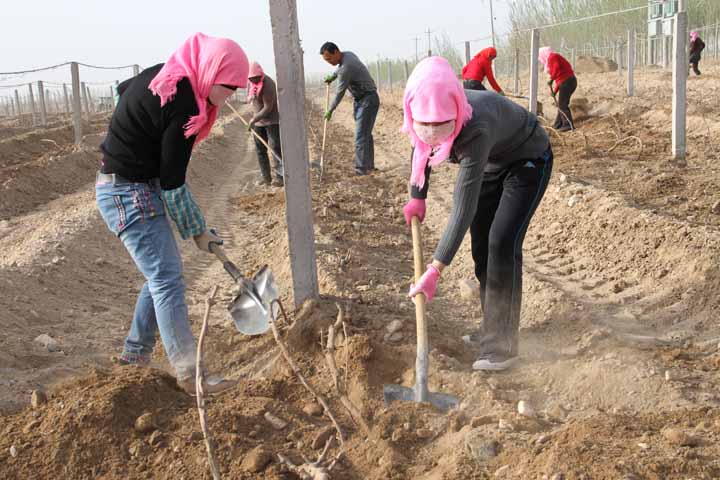
Vine burying is an expensive activity in winter in Ningxia, and the same amount of labor is required in the spring when the vines need to be “woken up”.
There is also an image issue with domestic wines. Food safety problems, fraud, and counterfeit wines are often associated with China’s produce. But gradually people are realizing that Ningxia’s wines are already making a big difference. The contrast of rising wine quality in Ningxia with the notorious “Made in China” reputation outside of China has led to a campaign within the industry advocating for strong domestic consumption, under the slogan: “Chinese people drink Chinese wine.”
Whether you view it as a nationalist movement or determined faith that the industry can produce quality wines, one thing is certain: that Chinese wine is entering the global stage and Ningxia has the starring role.
The future of Ningxia = The future of Chinese wine?
Many say Ningxia is the future of Chinese wine. It is probably still too early to declare that, but it is one of its most promising prospects. I can confidently say that Ningxia is at least at the forefront of quality wine production in China.
There are few opportunities to taste Chinese wines in the West, other than perhaps a few occasions such as global wine fairs. In Ningxia, very few producers export, though Silver Heights does, as winemaker/owner Emma Gao believes their wines should be appreciated by the world, not only in China. “People are actually curious about Chinese wine. Now we are exporting to London as well as many European countries such as Sweden and Finland,” said Emma Gao in her talk at the webinar.
Pricing seems to be another issue for Chinese wine. Many people pointed out that excellent Chinese wines are way too expensive, and at the same time they don’t have enough confidence to buy inexpensive bottles.
But Ningxia might be the first region to change this perception as well. With more quality wines being made by more than just a handful of producers, one can presume that the high prices will eventually settle to a reasonable point. In fact, there are already many good value wines under $30 from Ningxia. But for the leading producers, especially the boutique ones, price won’t go very low, as the cost of production is still high in Ningxia for smaller businesses.
“If our wines are comparable to some of the world-class bottles, then we would also expect the price to justify the quality and our hard work,” said Zhang Jing. The top wines from Helan Qingxue now retail at around RMB 350-450 (around US$50-70), a price range that suits many top-rated Ningxia wines.
During my lengthy interviews, winemakers also expressed their positive prospects about the future of Ningxia and Chinese wine.
“I think the future of Chinese wine rests with Ningxia, not because I am a winemaker here,” concluded Liu Jianjun. “Against all the odds, it is the hub of modern Chinese wineries. They are less scattered than other regions like the mountainous Yunnan (where the premium and expensive Ao Yun comes from) and are duly supported by the government. Most importantly, it is hard to find anywhere else in China like Ningxia where people are so serious and all-out about making excellent wine,” Liu assured me at the end of our conversation.
So far, Ningxia’s efforts have been repaid. With younger generations of winemakers developing a well-rounded and aesthetic taste in wine and carving through different styles, people have come to understand that sometimes, less is more. They quickly zeroed in on the genuine expressions of grape and terroir instead of simply putting on oak or laying a heavy hand to over-manipulate the winemaking process.
Over the last decade, many newcomers who invested in the wine industry in Ningxia also realized that great wine is not made by people wearing suits and ties in a fancy “chateau”, but instead, by people with dirty hands and sweaty faces in the dusty vineyards. Many producers have expressed the same idea, saying that time and the market are gradually filtering out those who only wish to grab the biz and yield quick money from winemaking. In short, “not all the wineries will be able to survive,” says Emma Gao. So far, we have witnessed a significant shrink in the wine production side in China, partly because of the crisis brought by COVID-19, partly out of the intrinsic and managerial problems, and a few producers in Ningxia reportedly have shut down.
Today, Ningxia is making excellent wines and the top bottles are already standing shoulder to shoulder with some of the finest Bordeaux (see James’s recent report on his Hongkong Tasting when some of china’s best competed with top names of Bordeaux). As attention grows, I expect Ningxia to be continuously challenged in blind tastings in the future by the “big shots” and given the chance to prove itself. Will it have the wow factor that delivers surprises? I think it certainly has, but it still needs to fine-tune the details, work on the finesse side, or what I always call the “intellectual” aspect of the wine. This will be the true test, to determine how far these wines can really go.
For producers, they should get used to failure as much as they get used to triumph. But above all, for now, they have to survive and sell out the glut of wines first before they grow even stronger. Until then, we will keep an eye on Ningxia and look forward to the bright future of this ever-burgeoning Chinese wine hub.
See below some of the most exciting wineries and wine projects currently taking place in Ningxia, and below these find the tasting notes for some of our top wines from Ningxia. You can expect many more to be added to these lists in future years.
6 go-to producers from Ningxia
Helan Qingxue贺兰晴雪酒庄
Often, this represents an elegant, poised, fine expression for Ningxia red and refreshing chardonnay. Also, one of the established names among boutique wineries.
Kanaan Winery迦南美地酒庄
Wang Fang now makes some spicy, lustrous cabernet blend and fresh, tropical riesling with drinkability underscored.
Jade Vineyard 嘉地酒园
This producer appears to be one of the most promising wineries from Ningxia, making very rich, solid, and sleek red with class. High quality across the board. Try Aria, Four Seasons among others.
Silver Heights银色高地酒庄
One of the early high fliers of Ningxia continues to make classy cabernet blend and round but drinkable chardonnay. Wines always possess a well-judged balance between richness and freshness, I remember. Try their Summit label and the magnum bottles of Emma Reserve, if you can find.
Lilan Winery立兰酒庄
A serious producer that consistently makes excellent red. New releases of white wine are also very noteworthy. Try “Lancui”.
Domaine Chengcheng铖铖酒庄
Consulted by OENO TEAM, Domaine Chengcheng makes rich, generous red with class and restraint.
Wineries & wine projects to watch in Ningxia
Chateau Mihope美贺庄园
Very promising new winery owned by Media Group. Both new releases of red and white are noteworthy.
Chateau Zhihuiyuanshi 志辉源石酒庄
One of the three second-growth producers now, making a range of quality wines at different price points.
Changyu Moser XV 张裕摩塞尔十五世酒庄
Owned by Changyu, one of the largest players in China.
Lingering Clouds (by Liu Jianjun) 停云
A tiny project run by Liu Jianjun, an independent winemaker who sources grapes on his own and already makes some excellent bottles with extremely limited quantity.
Pernod Ricard Helan Mountain 保乐力加贺兰山
Owned by Pernod Ricard. This is one of my best-value producers with a significant volume of production from Ningxia.
Domaine des Arômes 博纳百馥
Keep an eye on this tiny producer. At its best–well-drinkable cabs with a Burgundy and Natural Wine sensibility.
Ho-lan Soul 贺兰神
We found excellent marselan and cabs from this producer, but they also make a weird, unpalatable rosé. For the mass market?
Legacy Peak留世
Rich, flattering red wines made from older vines. White needs acidity.
Domaine Chandon Ningxia 夏桐宁夏
LVMH’s investment in Ningxia. Now produces solid sparkling wines with good value.
Chateau Chanson尚颂堡 / Xinhuibin Winery 新慧彬酒庄
Also known as Xinhuibin Winery. The rebranded new release of Chateau Chanson deserves attention.
Xige Estate西鸽酒庄
An ambitious, modern wine estate with a brand-new winery with massive production and produces some good-value bottles. Keep an eye on this.
– Zekun Shuai, associate editor in Beijing

